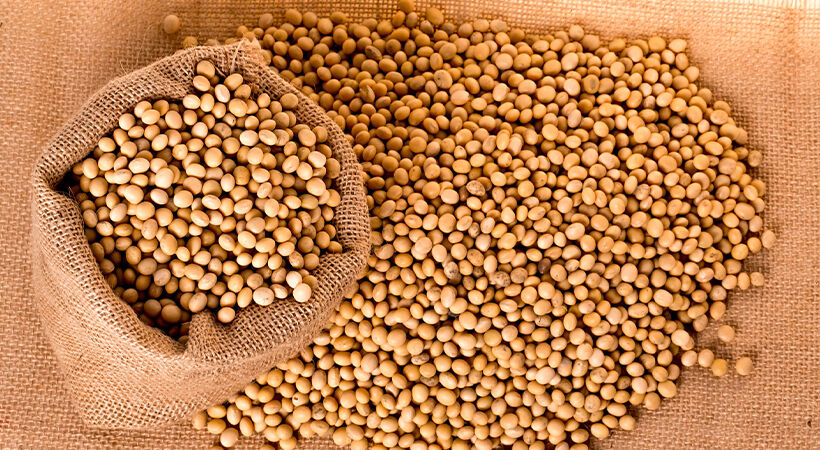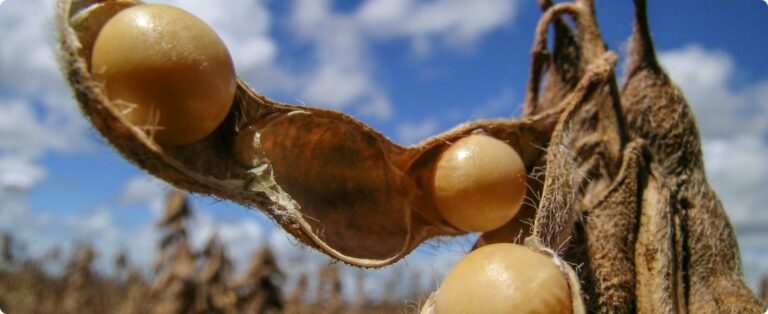
Image: Pixabay
Brazil should confirm a record soybean harvest exceeding 130 million tons and the market should maintain firm prices both on the Chicago Stock Exchange and in the national physical market. These were some of the highlights of the talk by SAFRAS & Market consultant, Luiz Fernando Gutierrez Roque, during the first day of SAFRAS Agri Week, a completely online event that takes place from March 9th to 11th.
According to the consultant, the main challenge at the moment for Brazilian production is the harvest taking place with excessive rainfall in the Central-West. “We had a very positive climate in the Southeast and Central-West, attention was focused on Rio Grande do Sul and the entire South due to the lack of rain with La Niña. Despite some problems in RS, the harvest is good. On the other hand, the Center-West now, mainly Mato Grosso, but also Goiás and Tocantins, despite the good development of the harvest, faces excess humidity”, he highlighted.
This climatic condition brings losses of both production and quality. But this will not prevent Brazil from harvesting a record harvest, it will only have a greater impact on quality. The SAFRAS estimate for now is a soybean production of 133.104 million tons in 2020/21, with an increase of 4.7% over the 2019/20 harvest, indicated at 127.178 million tons. Luiz Roque says that SAFRAS should revise downwards the estimate of Brazilian production due to climate problems, especially now with the rains during the harvest in the Center-West. But it will still be a record harvest of more than 130 million tons.
{module Form RD}
In the market, the consultant highlighted that prices were exceptional in 2020, with the high dollar being fundamental in supporting soybean prices, with the global currency soaring with the global risk that the pandemic brought. Brazilian soybeans became more competitive and China increased its demand for food. Soybean exports soared and there was an increase in domestic demand with an increase in meat exports. Roque highlighted that, despite the Chicago Stock Exchange having relatively low prices between January and August 2020, the dollar boosted prices and exports in Brazil. With China having purchased a lot of Brazilian oilseeds in the first eight months of 2020, the last four months of the year were of lower supply and a detachment of domestic prices in relation to Chicago, with soybeans at around R$ 180.00 per bag in some squares. And Brazil has the lowest transit stocks in history.
Then the Chicago Stock Exchange reacted and is at the highest levels since 2014, reflecting North American production problems in 2019 and 2020, the increase in demand from China, record exports in the United States, strong North American crushes and tightness in stocks, highlighted the consultant. He indicates that in the first half of 2021 if the weather worsens in Brazil, and also in Argentina, prices could rise further in Chicago and even surpass US$ 15.00 per bushel. Today the May contract is around US$ 14.30. On the other hand, if the planted area in the United States grows and the climate is favorable for planting, there is room for downward corrections.
In the second half of the year on the Stock Exchange, Luiz Gutierrez Roque says that the climate market in the USA could affect prices. In a scenario of production losses, prices could test and surpass US$ 15.00 per bushel. But in a record harvest, prices could test US$ 13.00 to US$ 13.50. Thus, Roque works with the possibility of prices fluctuating from US$ 13.00 to US$ 15 per bushel in 2021. With weather problems in South America and/or the USA, the price could break above the US$ 15.00 line.
In Brazil, for soybean prices, the consultant believes in firm prices, with the dollar above US$ 5.00. Perhaps the American currency will move to a low of US$ 5.20 to US$ 5.30 with greater global economic activity with the world overcoming the pandemic with vaccination. It depends a lot on political-economic instability in Brazil as well. And the dollar at these levels should keep soybean prices in Brazil sustained. Contributing to this is the fact that Chicago has firm prices, Brazilian stocks are low, there was a delay in the harvest and the country has already sold a large part of the harvest.
By: Lessandro Carvalho | Crops & Market
Copyright 2021 – CMA Group















